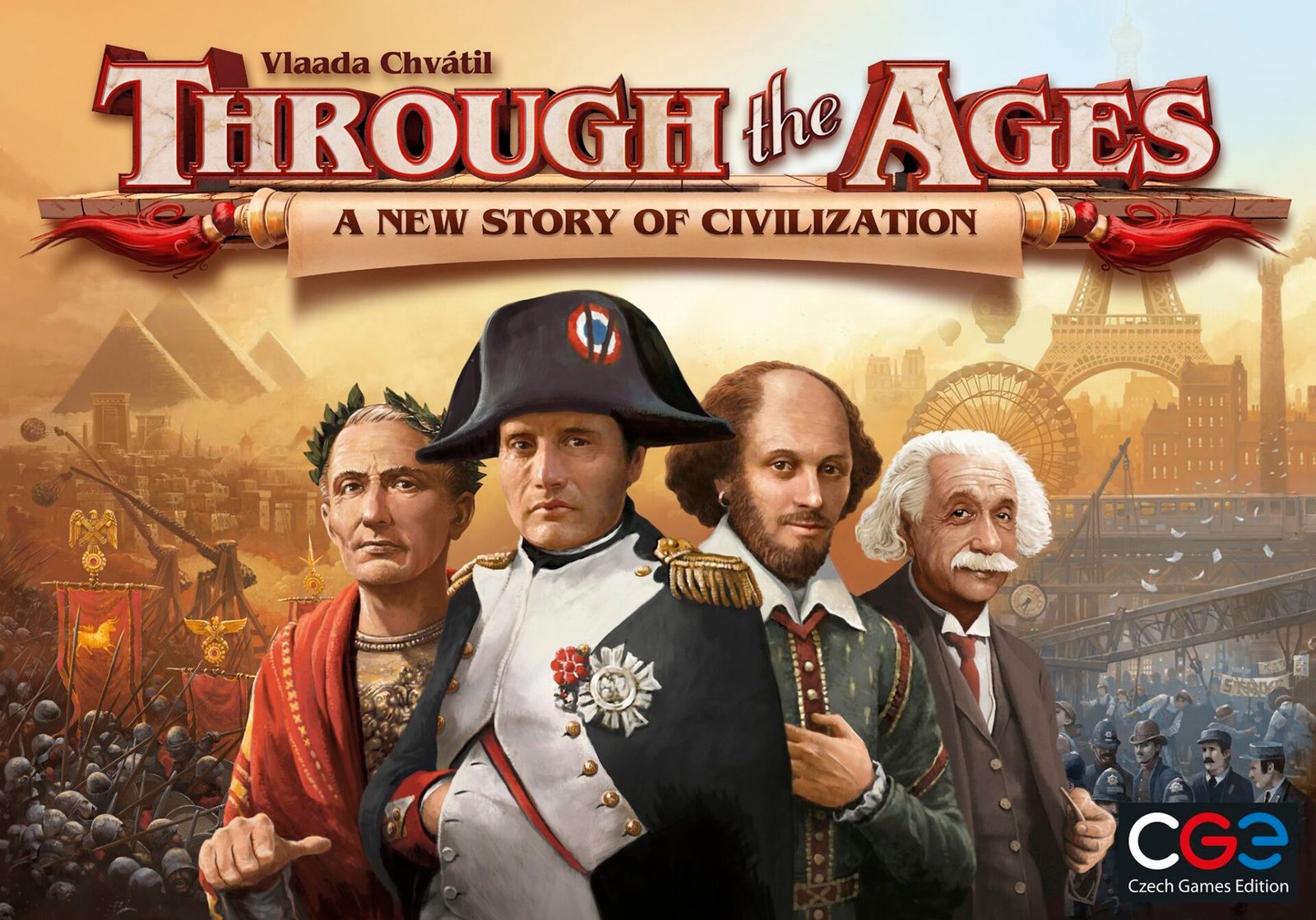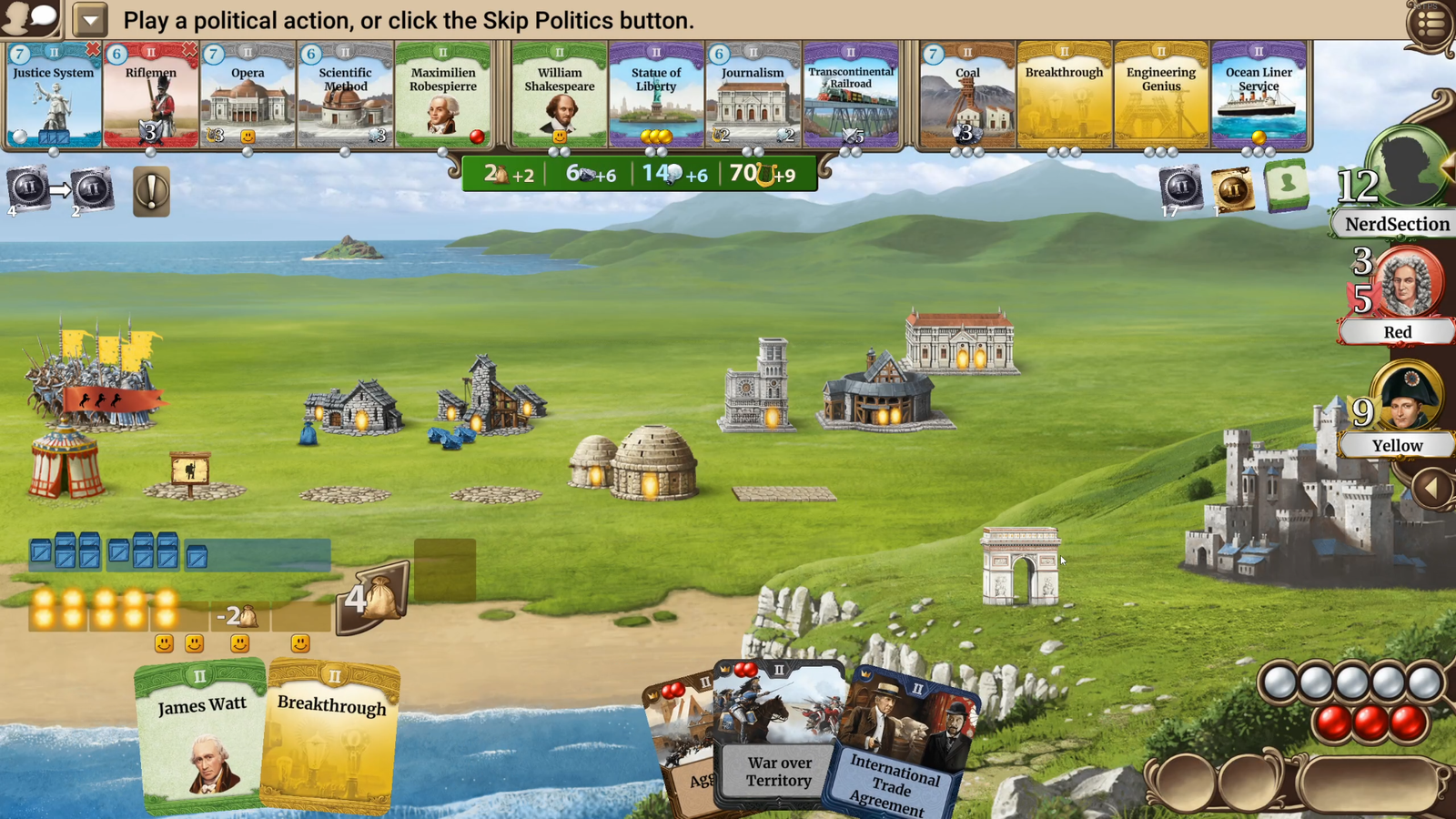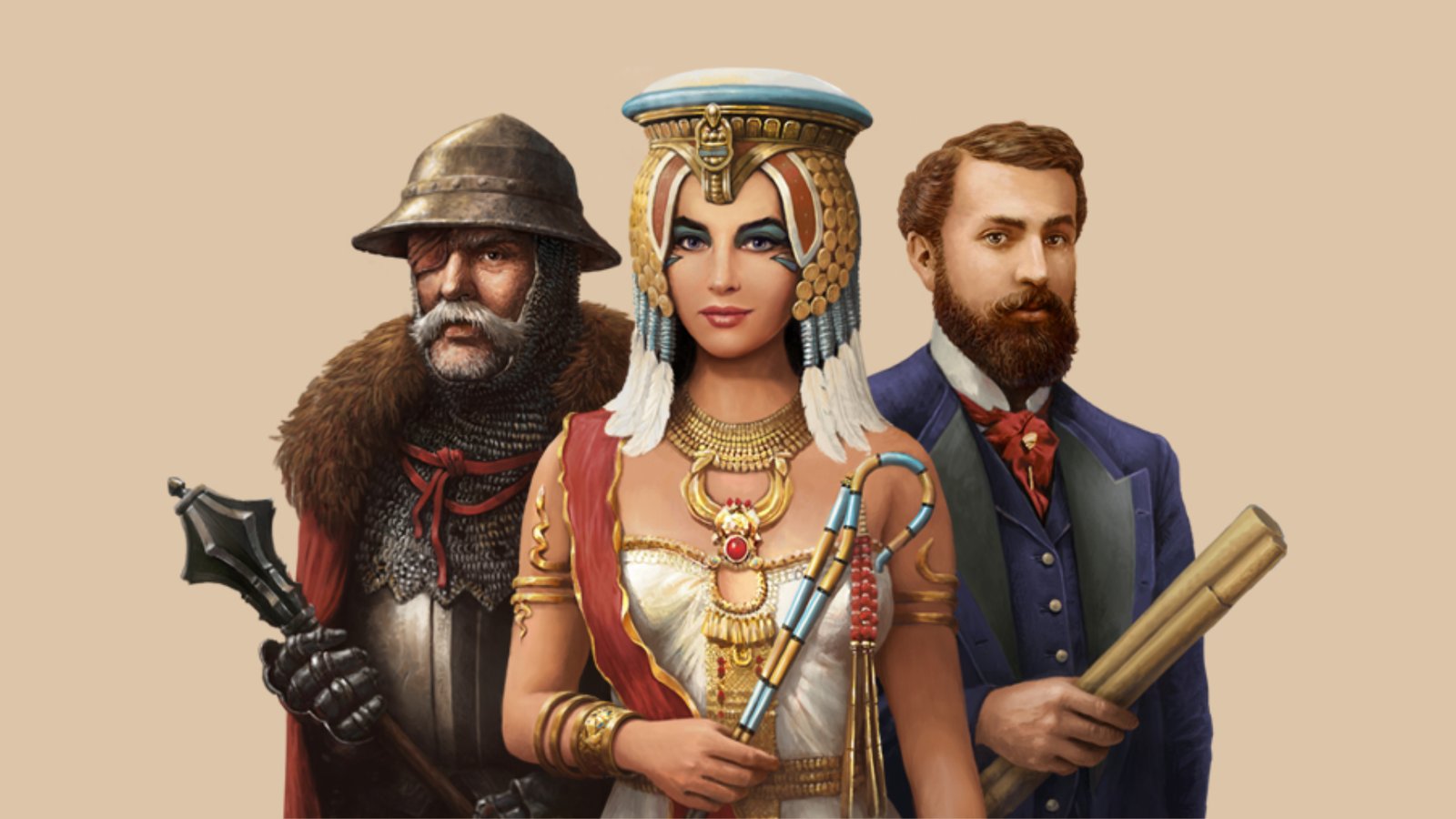What does it take to lead a civilization from a ragtag tribe to a dominant global force? In the realm of board gaming, few titles let you answer that question as thoroughly—and mercilessly—as Through the Ages. Vlaada Chvátil’s legendary civilization builder is not just a game about advancing technology or constructing wonders. It’s a lesson in hard-fought growth, fragile balance, and the painful cost of poor military planning.
The Game

Let’s start with the game itself. Through the Ages: A New Story of Civilization is the revised version of Vlaada’s original design from 2006, refined in 2015 with better balance, streamlined military, and cleaner card interactions. The premise is simple: build a civilization across three ages—Antiquity, Middle Ages, and the Modern Era—by managing resources, developing technologies, constructing buildings and wonders, and choosing the right leaders at the right time. But don’t let the simplicity fool you. Underneath lies a beast of a game. Every decision carries weight. Every missed action can snowball. You’re drafting cards from a shared row, each one offering something vital—culture, science, production, or power—and you never have enough actions to do everything. Worse still, other players are chasing the same dreams. Civilization might be built on stone, but in this game, it’s held together by pure brainpower.
The Gameplay

Gameplay-wise, Through the Ages is unapologetically complex. It’s a game of long-term planning and short-term panic. Your government determines your action limits. Your population must be educated, fed, and housed before they can contribute. Your military can’t fall too far behind, or you’ll be plundered into oblivion. The game rewards efficiency, but punishes neglect. A weak military isn’t just a problem—it’s a buffet for other players. Aggressions and wars can rip apart your engine. Culture, the game’s victory currency, must be accrued steadily, but never at the cost of defense or infrastructure. Each turn feels like triage. That’s the beauty—and pain—of the game: you’re always making hard choices. And because of that, every win feels earned.
The Digital Adaptation

So how does all that translate to digital? Remarkably well. In fact, it might be the best digital adaptation of any heavy strategy game, period. CGE didn’t just port the rules. They reimagined the entire game flow to fit screens of all sizes. The interface is clean, intuitive, and functionally rich. Want to zoom in on a card? Tap. Want to compare civilizations? One click. Need to rewatch what just happened? Use the built-in replay system. Every feature you need to manage the chaos is right there. The visuals may not be flashy, but they’re perfectly serviceable—and more importantly, they serve clarity over flair. Even on smaller screens, icons and information are digestible, though phones do have a bit of a cramped feel.
But what truly elevates the app is the tutorial. You’re guided through your first game by none other than Ancient Vlaada himself—digitally animated and dryly humorous. It’s not just charming, it’s functional. This isn’t a one-shot intro. It’s a 10-part saga that walks you through mechanics bit by bit, letting you absorb complexity without drowning in it. Yes, you’ll still get wrecked in your first real game. But you’ll know why—and that’s invaluable. Between the tutorial, reference guides, rulebooks, and in-game tooltips, the app builds you up brick by digital brick.
The Strengths & Weaknesses

Let’s talk about the real strength of this app: it eliminates downtime. Anyone who’s played the tabletop version knows the mental exhaustion of tracking resources, managing cubes, and calculating science costs while three other players are doing the same. In the app, all of that administrative load vanishes. You focus on decisions, not math. And with asynchronous multiplayer, you can have several games running simultaneously, checking in when it’s your turn. Notifications work flawlessly, letting you know exactly what’s happening and when. Plus, digital rules streamline certain multiplayer interactions—like colony bidding or simultaneous effects—so you’re not waiting endlessly for others to respond. For competitive players, the app supports ranked play and even tournaments, with the only minor downside being that the tournament interface runs through CGE’s website.
If you prefer solitude, single-player doesn’t disappoint. The AI comes in three difficulty levels, and even “Easy” will humble most new players. But the real cherry on top? Challenges. These optional game modes twist the rules to keep things fresh. One reduces all costs, another limits culture generation, and others impose unique limitations. And yes, the beloved “Clash of the Immortals” challenge, where only one leader per game is allowed, is present and brutal.
Hotseat multiplayer is available too, for those who want to pass and play. And you can toggle a variety of game settings to shorten or customize matches—especially helpful for less experienced players or quick casual games. The app even supports the full “New Leaders & Wonders” expansion, unlocking tons of replayability. That alone is a huge win—many apps skip expansions or delay them for years, but here it launched early and integrated cleanly.
Now, let’s address the weaknesses. There aren’t many, but they’re worth noting. Occasionally, synchronization bugs in online games prevent players from continuing the game. It’s rare, but frustrating when it happens. Another issue is a recurring glitch where colony bidding becomes unavailable—fixable with a relog, but still annoying. Fortunately, these bugs are the exception, not the rule. For a game of this complexity, the level of polish is impressive.
Conclusio

In conclusion, Through the Ages in digital form is not just a convenience—it’s a revelation. It turns a five to eight hour tabletop slog into a strategic ballet you can experience in under an hour. It teaches newcomers with care, challenges veterans with depth, and provides an asynchronous experience that’s virtually unmatched. Whether you’re a die-hard civ builder or someone who just wants to conquer the world from a bus seat, this app delivers. Vlaada Chvátil’s masterpiece lives on in silicon, sharper and more accessible than ever. And honestly? After this, you might never want to play the physical version again.















